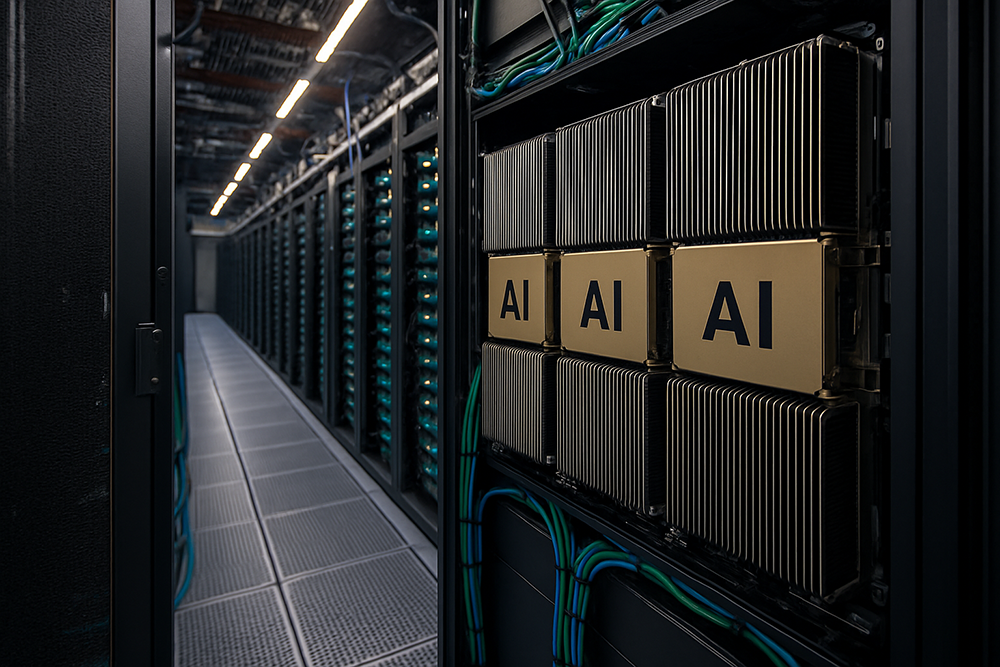The AI Revolution in Data Centers: Powering Intelligence at the Core

As artificial intelligence (AI) continues to advance at a rapid pace, it’s not only transforming applications and services but also reshaping the very foundation of digital infrastructure. Data centers are entering a new era, rapidly evolving to support the explosive growth of AI workloads. From large language models to real-time inferencing for edge devices, AI is demanding more power, more specialized hardware, and more innovative engineering than ever before. This issue of CRSC Connections explores how the AI revolution is driving transformative changes across the data center industry.
AI Workloads Are Rewriting the Rules of Data Center Design
Traditional data centers were designed for general-purpose computing, but AI workloads require a fundamentally different approach. Training large models and running complex algorithms demands high-density GPU clusters, ultra-fast networking, and specialized infrastructure that can accommodate escalating power and heat requirements. As a result, data center operators are now deploying high-density racks that exceed 40 to 100 kW per rack, compared to the traditional 5 to 10 kW. The rise of purpose-built hardware, such as NVIDIA’s H100 GPUs or Google’s custom TPUs, is replacing general-use CPUs and necessitating powerful, low-latency data pipelines. Networking upgrades are following suit, with 400G Ethernet and dedicated fabrics becoming the new standard to eliminate bottlenecks and optimize throughput.
Advanced Cooling Solutions Meet AI’s Heat Challenge
AI’s intense computing requirements come with a significant thermal load, prompting the adoption of advanced data centers cooling systems to ensure efficiency and reliability. Liquid cooling, especially direct-to-chip systems, is rapidly becoming the go-to solution for managing the heat generated by densely packed AI servers. Additionally, immersion cooling, where servers are submerged in a non-conductive fluid, has gained momentum due to its ability to reduce both energy consumption and spatial requirements. Some innovative data centers are even capturing waste heat to power adjacent communities or industrial operations. These strategies are proving essential as facilities strive to meet the dual demands of performance and sustainability.
Powering AI: Clean Energy and Grid Innovation
The energy demands of AI aren’t just reshaping cooling; they’re reshaping the grid. To meet growing needs, hyperscale data center operators are investing heavily in renewable energy and energy storage solutions. In early 2025, Meta announced plans for a 1-gigawatt AI-focused data center campus, powered entirely by wind and solar, with large-scale battery storage to ensure uninterrupted service. Meanwhile, other operators are working directly with utilities to secure long-term clean energy agreements and reduce reliance on fossil fuels. These developments are helping position AI data centers not just as energy consumers but as leaders in sustainable innovation.
AI-Driven Optimization: Smarter Data Centers from the Inside Out
The transformative power of AI extends beyond the workloads it hosts; it’s also being used to optimize data center operations themselves. AI algorithms are helping monitor and manage energy usage, dynamically adjust workloads, and predict equipment failures before they happen. Google’s DeepMind AI cooling system is a notable example, delivering a 30% reduction in cooling energy across some of Google’s most extensive facilities. These systems are redefining operational efficiency by enabling real-time decision-making based on vast streams of sensor and performance data, making the modern data center more intelligent and more autonomous.
Edge AI and the Micro Data Center Movement
As AI expands beyond the cloud and into the real world, edge data centers are gaining momentum. Applications such as autonomous vehicles, real-time analytics, and industrial IoT require ultra-low latency and localized processing. Micro data centers are emerging as a solution, compact, modular, and strategically placed closer to end users. In 2025, edge infrastructure providers like Vapor IO and EdgeConneX expanded their networks to support AI inferencing at the edge. These deployments offer both speed and efficiency, reducing the energy cost of data transit while improving responsiveness for AI applications in cities, factories, and remote areas.
Sustainability in the Age of AI
While AI opens new frontiers, it also introduces new challenges, particularly in the realm of sustainability. Training a single large-scale AI model can consume as much electricity as hundreds of homes, raising serious environmental concerns. In response, major tech companies are doubling down on their climate commitments. Microsoft has pledged to run all AI workloads on 100 percent carbon-free energy by 2030. Amazon and NVIDIA are investing in research to make AI training more energy-efficient, and NVIDIA’s H100 GPUs now deliver twice the performance per watt compared to the previous generation. Emerging players in the chip space are also focused on building AI processors that prioritize low power and environmental impact.
Looking Ahead: Intelligent, Sustainable Infrastructure
AI is fundamentally reshaping how we build and manage data centers, from the hardware and layout to energy strategy and cooling. However, it’s also equipping us with new tools to make those centers more efficient, sustainable, and responsive. The convergence of AI and data infrastructure marks a pivotal moment in the industry’s evolution. At CRSC, this transformation presents a significant opportunity for those who are ready to adapt and lead. As AI continues to scale, the data centers that power it must not only be faster but also more intelligent and greener.



